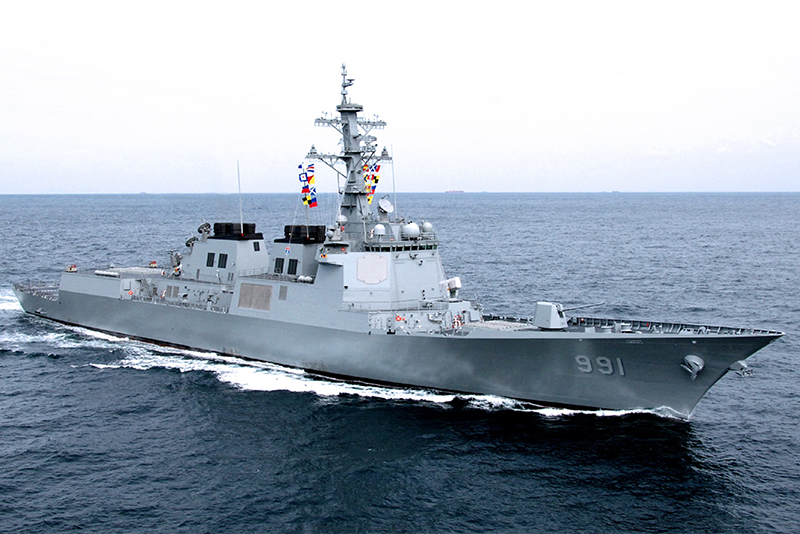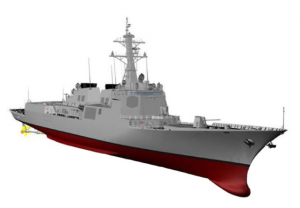SEOUL, May 14 (Korea Bizwire) — The next-generation South Korean destroyer, known as the KDDX and also dubbed a “mini-Aegis ship” due to its 6,500-ton displacement, will be the first Korean warship to be developed as an “electric ship.”
The incorporation of an “integrated electric propulsion system,” which eliminates engines and transmissions, allows for a reduction in noise and the provision of larger amounts of power to the ship.
This results in a decisive advantage in anti-submarine warfare against submarines and allows for flexibility in future weapons such as railguns and laser weapons, which require vast amounts of power.
The KDDX’s adoption of the integrated electric propulsion system marks a significant step towards enhancing stealth and preparing for the installation of high-powered future weapons.
The US’s next-generation stealth destroyer, the Zumwalt-class, which costs a whopping KRW 5 trillion to build, also adopts an integrated electric propulsion system to accommodate new weapons that require vast amounts of power.
The KDDX will not use the Aegis combat system but will instead be equipped with a combat system developed with domestic technology, making it a Korean mini-Aegis ship.
The KDDX’s basic design is set to be completed by the end of this year, and detailed design and lead ship construction will begin next year, with plans to acquire six KDDXs by 2036.
In addition to the integrated electric propulsion system, the KDDX boasts an integrated mast that improves its stealth capabilities by combining radars mounted separately on the outside of the ship into a single mast.

The Hong Sang Eo torpedo, also called the K-ASROC, is a vertically launched anti-submarine missile. (Image courtesy of ADD: Agency for Defense Development)
The mast is manufactured with purely domestic technology and equipped with a dual-band multifunctional phased array radar, infrared search and track (IRST) and infrared identifier (IFF) sensors, and a communicator antenna.
Although the wave penetrator has been changed to a more conventional shape, Hyundai Heavy Industries (HHI), the shipbuilding company, is currently carrying out the basic design of the KDDX.
“We have faithfully reflected the needs of the military and the Radiation Agency, and we understand that it has been changed from the initial proposal,” said an official from HHI.

In 2008, Hyundai Heavy Industries built the first destroyer, King Sejong the Great. The image shows the 8,500t King Sejong the Great (KDX-3)-class Aegis guided-missile destroyer. (Yonhap)
In conclusion, the KDDX is set to become a significant addition to South Korea’s naval defense, with its advanced technology and focus on enhancing stealth and flexibility in future weapons.
The adoption of an integrated electric propulsion system, along with the integrated mast, will provide a decisive advantage in anti-submarine warfare against submarines and other stealth operations.
With plans to acquire six KDDXs by 2036, the KDDX project represents a major milestone for South Korea’s naval capabilities.
M. H. Lee (mhlee@koreabizwire.com)







